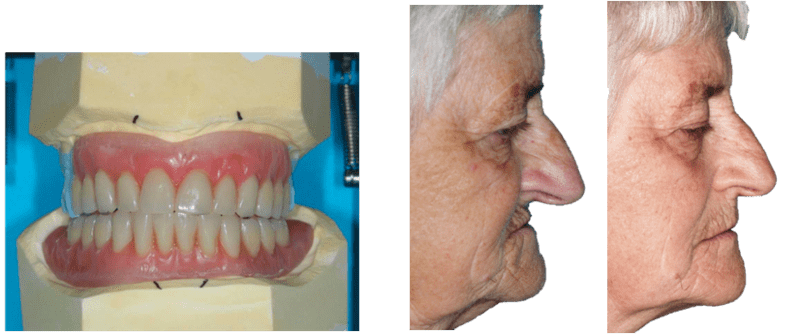-
0
Patient Assessment
- 0.1 Patient demand
- 0.2 Overarching considerations
- 0.3 Local history
- 0.4 Anatomical location
- 0.5 General patient history
-
0.6
Risk assessment & special high risk categories
- 5.1 Risk assessment & special high risk categories
- 5.2 age
- 5.3 Compliance
- 5.4 Smoking
- 5.5 Drug abuse
- 5.6 Recreational drugs and alcohol abuse
- 5.7 Parafunctions
- 5.8 Diabetes
- 5.9 Osteoporosis
- 5.10 Coagulation disorders and anticoagulant therapy
- 5.11 Steroids
- 5.12 Bisphosphonates
- 5.13 BRONJ / ARONJ
- 5.14 Radiotherapy
- 5.15 Risk factors
-
1
Diagnostics
-
1.1
Clinical Assessment
- 0.1 Lip line
- 0.2 Mouth opening
- 0.3 Vertical dimension
- 0.4 Maxillo-mandibular relationship
- 0.5 TMD
- 0.6 Existing prosthesis
- 0.7 Muco-gingival junction
- 0.8 Hyposalivation and Xerostomia
- 1.2 Clinical findings
-
1.3
Clinical diagnostic assessments
- 2.1 Microbiology
- 2.2 Salivary output
-
1.4
Diagnostic imaging
- 3.1 Imaging overview
- 3.2 Intraoral radiographs
- 3.3 Panoramic
- 3.4 CBCT
- 3.5 CT
- 1.5 Diagnostic prosthodontic guides
-
1.1
Clinical Assessment
-
2
Treatment Options
- 2.1 Mucosally-supported
-
2.2
Implant-retained/supported, general
- 1.1 Prosthodontic options overview
- 1.2 Number of implants maxilla and mandible
- 1.3 Time to function
- 1.4 Submerged or non-submerged
- 1.5 Soft tissue management
- 1.6 Hard tissue management, mandible
- 1.7 Hard tissue management, maxilla
- 1.8 Need for grafting
- 1.9 Healed vs fresh extraction socket
- 1.10 Digital treatment planning protocols
- 2.3 Implant prosthetics - removable
-
2.4
Implant prosthetics - fixed
- 2.5 Comprehensive treatment concepts
-
3
Treatment Procedures
-
3.1
Surgical
-
3.2
Removable prosthetics
-
3.3
Fixed prosthetics
-
3.1
Surgical
- 4 Aftercare
Prosthodontic guides - overview
Key points
- Prosthodontic guides assist in establishing correct diagnoses
- Obtaining accurate diagnostic casts and an inter-occusal/arch registration permits precise evaluation of existing morphological determinants and treatment possibilities
Diagnostics - Introduction
Diagnosis is a Greek word that means discern or distinguish; thus, diagnosis is a cognitive experience. The diagnostic process was originally based on interrogation, inspection, auscultation, olfaction and palpation. With advancement in medical technology, specific tools are available to enhance the diagnostic process. After a preliminary inspection, the clinician uses specific instruments and tests to obtain more information on the patients’ condition.
Edentulous predicament
A compromise in structural and functional integrity accompanies teeth loss and demands the dentist's scrupulous assessment of the following:
- Facial morphology and facial height
- Esthetic appearance related to the tooth position, particularly when smiling
- Stable mandibular position
- Interjaw relation in the sagittal and transversal dimension
Preliminary teeth arrangement
For completely edentulous patients the mounting of casts in the articulator together with a preliminary teeth arrangement serves to assess a variety of facial, morphological, esthetic and functional parameters.
An orientation index that exhibits the teeth position of the setup in relation to the edentulous jaw makes spatial dimensions visible, particularly with regard to the degree of residual ridge resorption. This is essential for prosthesis planning and design.
Clinical examination
A clinical extra- and intraoral examination of the patient provides the dentist with an initial assessment of interarch space and maxillo-mandibular relations.
The diagnostic procedure consists of the following steps:
- Impression making with alginate and stock trays
- Adjustment of wax rim to the interpupillary line, to an adequate vertical dimension and orientation of the occlusal plane
- Interocclusal registration with the used wax rims
- Mounting of casts
- Intraoral try-in of tooth arrangement
- Evaluation of the vertical dimension of occlusion and position of the occlusal plane
- Extraoral diagnosis of facial harmony, both in the relaxed rest position and in centric occlusion
- Scrutiny of tooth position, smile, midline, tooth exposure and lip/facial support
This information may be obtained from old, properly designed or well adapted dentures.
